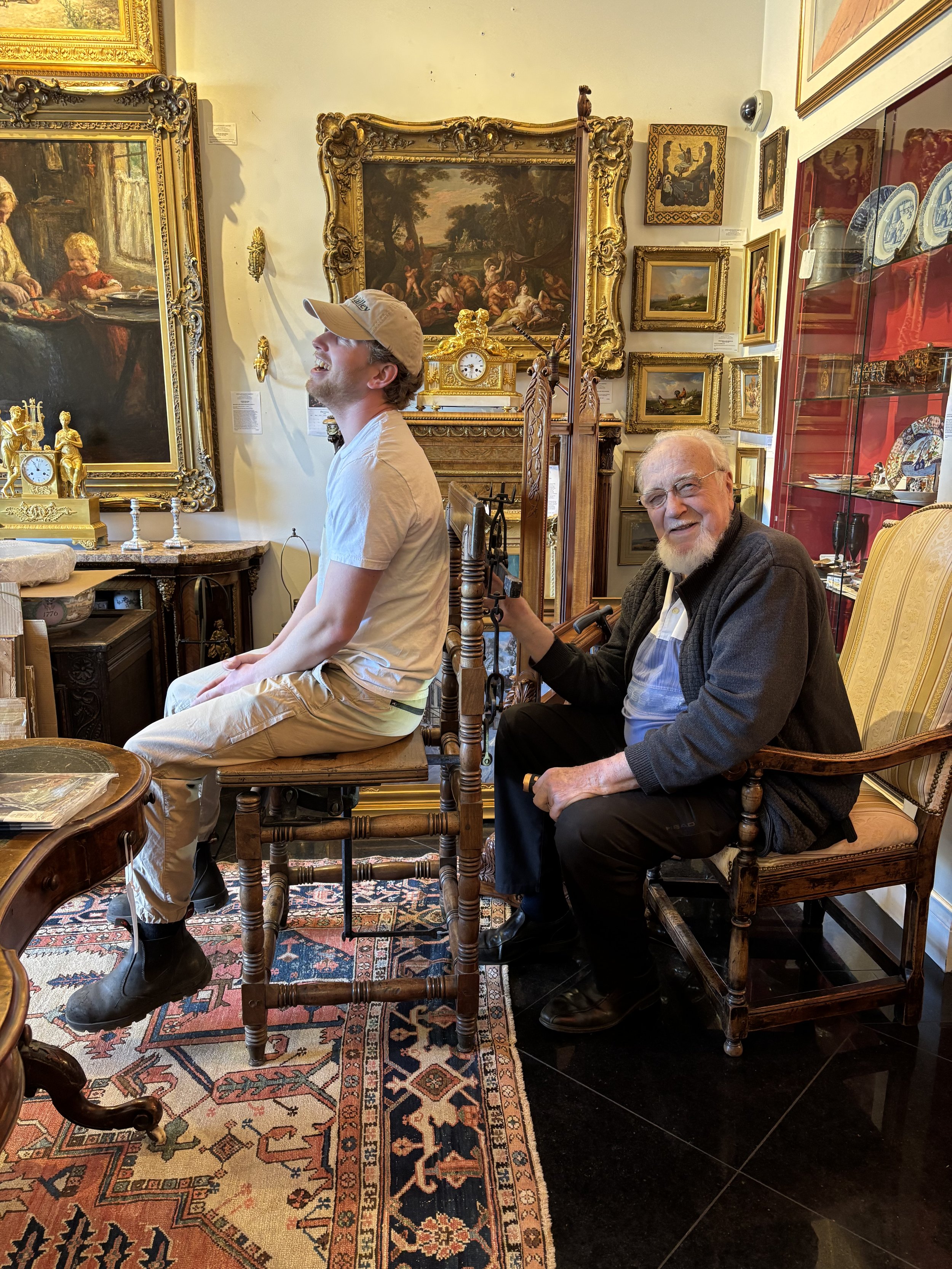Unique Georgian Jockey Scale
Come weigh in on our Georgian Jockey Scale!
This rare piece of equestrian racing history arrived in time for Royal Ascot, the pinnacle of racing.
The British weight measure in ‘stone’ is still used today to designate the dry weight of people and large animals, with the stone equivalent set at 14 lbs. The stone measure for weighing dates back as early as circa 1300 with the value of a stone fluctuating from region and with commodity, and with Scotland and Ireland using slightly higher values of 16 and 16.75 lbs per stone. While the British Weights and Measures Act of 1835 permitted the use of a stone of 14 lbs for trade, some other values remained in use. The stone is still widely used in the UK and Ireland to measure body weight, particularly in boxing and horse-racing.
Jockeys are weighed both before and after a race, to ensure that the weights in the program are correct, as jockeys who are too light are considered to have an advantage. The term ‘weighing out’ refers to weighing before a race, usually on the way out of the jockey’s room, and ‘weighing in’ refers to recording the weight after the race. After the race a rider is allowed to weigh a certain amount heavier to account for equipment changes and the accumulation of mud or water on the rider or tack. Most jockeys have different saddles, up to three, depending on the weight they need for each race. Today weights are recorded by digital scales, however historically the weights were manually calculated and the equipment had to be extremely accurate.
Horses receive a set weight in accordance with the Weight for Age Scale, a relationship between age and maturity and based on the horse’s age, sex, previous performance, the race distance, and the month of the year. This is a form of handicapping, which attempts to equal out the physical progress which the average thoroughbred racehorse makes as it matures. Thoroughbred horses mature extremely quickly, achieving 95% of their height and weight by the age of two, being fully mature by the age of three. The distance of the race is also taken into consideration, as younger horses are at a disadvantage the farther they have to run.
Come weigh in at the gallery on our unique Georgian jockey scale and see what you weigh in stones!
Unique Georgian 19th century English oak jockey scale in the form of a chair, the back complete with a built in cast iron scale mechanism designed to weigh up to 30 stones and 14 lbs (A total of 434 lbs).
Size in inches: 48 ½ h x 29 ¼ w x 26 ½ d J21251




